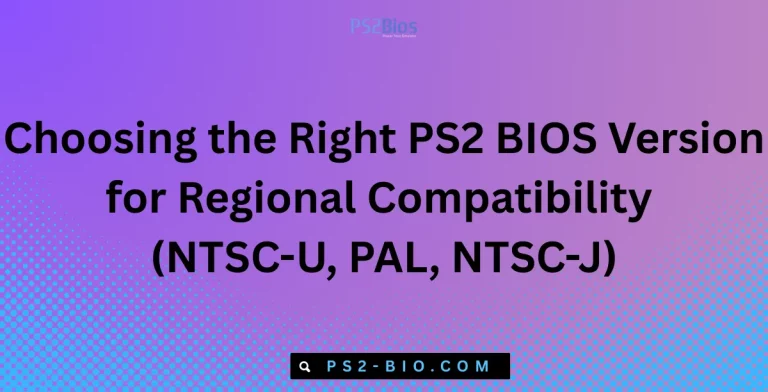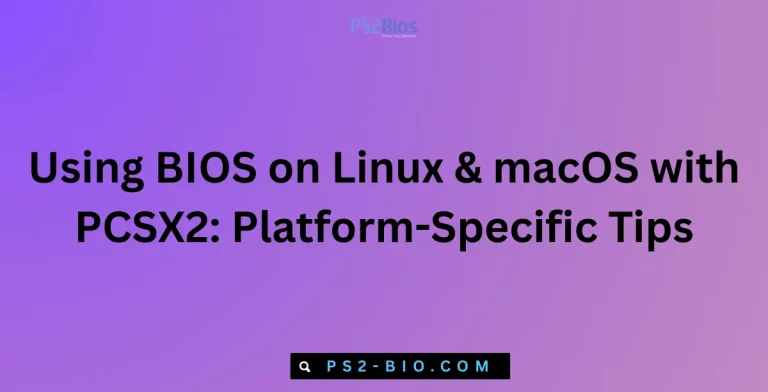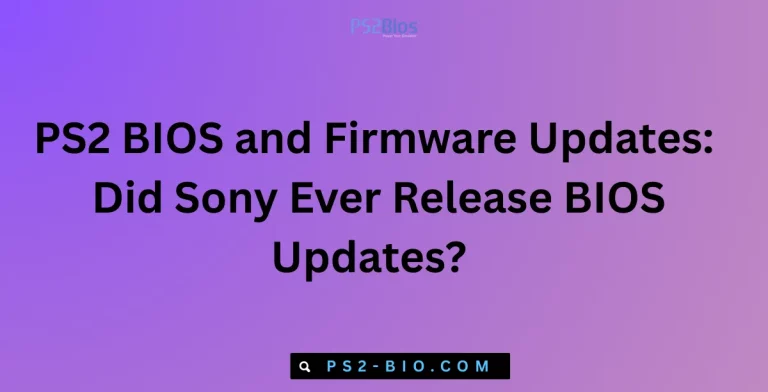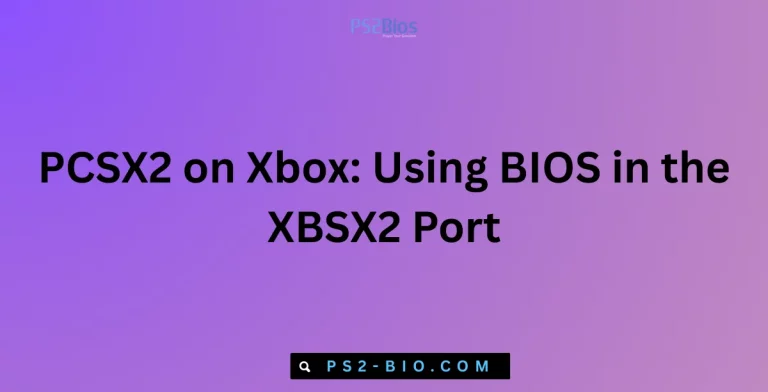The History of PS2 BIOS: From Official Firmware to Emulation Staple
Ever wondered how the PS 2 BIOS evolved from official console firmware to a key tool for emulation? Understanding its development reveals how gamers preserve, run, and optimize classic PS2 games on PCs and modern devices.

What is PS2 BIOS?
The PS2 BIOS (Basic Input/Output System) is the core firmware that initializes the PlayStation 2 console. It loads system functions, manages hardware, and starts games securely. Every PS2 console uses a specific BIOS version, which ensures proper compatibility with official game discs.
Originally, the BIOS resided on a small memory chip within the console. Its primary responsibilities included:
- Verifying game authenticity to prevent piracy
- Loading the PlayStation 2 operating system
- Managing hardware such as memory cards, controllers, and graphics
Without the BIOS, the PS2 could not function. This firmware became an essential component not only for console operation but also for software development and emulation projects.
The Role of BIOS in PS2 Gaming
The BIOS acts as the bridge between the PS2 hardware and the software. It performs several critical functions:
- Boot Process Management: Initializes the console and prepares it to load games.
- Security Verification: Ensures games are legitimate and protects against unauthorized copies.
- Hardware Communication: Controls memory cards, controllers, USB devices, and other peripherals.
- Regional Locking: Implements regional coding to restrict game compatibility based on location.
Each BIOS version came with slight variations, affecting performance, game compatibility, and even emulation accuracy. Developers and gamers soon recognized the BIOS as the backbone of the console.
Evolution of PS2 BIOS Versions
Sony released multiple BIOS versions across different PS2 models, including the SCPH-10000 series through the SCPH-90000 series. The variations were driven by hardware upgrades, bug fixes, and added security measures.
- Early Versions (SCPH-10000 to SCPH-30000): Focused on hardware initialization and basic security. Early models lacked support for newer peripherals and online functions.
- Mid Versions (SCPH-50000 to SCPH-70000): Introduced improvements in memory card handling, better disc compatibility, and initial support for PlayStation Network features.
- Later Versions (SCPH-90000): Optimized for slim PS2 consoles, reduced power consumption, and improved thermal management.
These updates ensured the PS2 remained compatible with evolving game releases and hardware upgrades, extending the console’s lifespan. Emulation developers later relied on BIOS dumps from these versions to ensure accurate reproduction of games.
PS2 BIOS and Emulation
The PS2 BIOS became a cornerstone for emulation with the rise of PC-based gaming. PCSX2, the most popular PS2 emulator, uses BIOS files to replicate console behavior on PCs. Accurate emulation depends on:
- Proper BIOS version matching the target game
- Correct hardware configuration emulated via software
- Compatibility with controllers, graphics, and memory card data
BIOS legality is critical. While BIOS files are copyrighted by Sony, they are necessary for emulation accuracy. Users typically extract the BIOS from their own PS2 consoles to remain compliant with copyright laws.
Technical Functionality in Emulators
In emulators, the BIOS handles tasks that the original console performed, such as:
- Game loading and verification: Ensures the ISO image corresponds to an authentic PS2 title
- System menu simulation: Provides access to memory card management, system settings, and hardware configuration
- Security enforcement: Mimics the original console’s checks to maintain game compatibility
Without a BIOS, the emulator cannot function correctly, making it an indispensable part of software preservation and gameplay accuracy.
PS2 BIOS and Gaming Preservation
The PS2 BIOS plays a major role in gaming preservation. By combining BIOS dumps with emulators, classic games can run on modern hardware, preventing loss due to:
- Aging optical discs
- Failing hardware components
- Regional restrictions limiting physical game access
Researchers and retro gamers use BIOS files to maintain authentic game experiences, ensuring that future generations can play and study classic titles.
Challenges with BIOS Emulation
While emulation offers convenience, BIOS use comes with challenges:
- Legal Concerns: Sony’s copyright restricts unauthorized distribution of BIOS files.
- Version Compatibility: Using the wrong BIOS version can cause crashes or errors.
- Hardware Emulation Limitations: Some games rely on low-level hardware quirks difficult to replicate accurately.
Despite these challenges, emulation has become an essential tool for preserving the PS2’s library, offering accessibility to games that are otherwise hard to obtain.
The Transition from Console to PC
As PCs became more powerful, emulating PS2 games became feasible for average users. Emulators like PCSX2 rely on the BIOS to:
- Replicate console timing and hardware behavior
- Support custom resolutions, widescreen modes, and texture enhancements
- Enable save states and memory card backups
These improvements make old PS2 titles playable with enhanced performance, bridging the gap between classic and modern gaming.
BIOS Extraction and Usage Tips
Gamers interested in emulation must extract the BIOS from their console. Key steps include:
- Using a PS2 with Memory Card: Connect your console to a PC using specialized software.
- Dumping BIOS Files: Tools like BIOS Dumper safely transfer BIOS to your computer.
- Configuring Emulators: Ensure the emulator points to the extracted BIOS file for accurate functionality.
Maintaining proper versioning ensures games run without errors, preserving both performance and authenticity.
PS2 BIOS in Modern Gaming Communities
Today, the PS2 BIOS remains central to retro gaming and online communities. Enthusiasts share guides on:
- Correct BIOS extraction methods
- Optimizing emulator settings
- Troubleshooting version-specific errors
Communities on platforms like Reddit, GitHub, and specialized forums help preserve knowledge about BIOS usage while respecting legal restrictions.
Conclusion
The PS2 BIOS transformed from simple console firmware into a crucial tool for emulation and game preservation. By ensuring compatibility, security, and authentic hardware behavior, it allows classic PS2 games to live on modern PCs. Understanding its history highlights how technology and community effort sustain gaming heritage.






